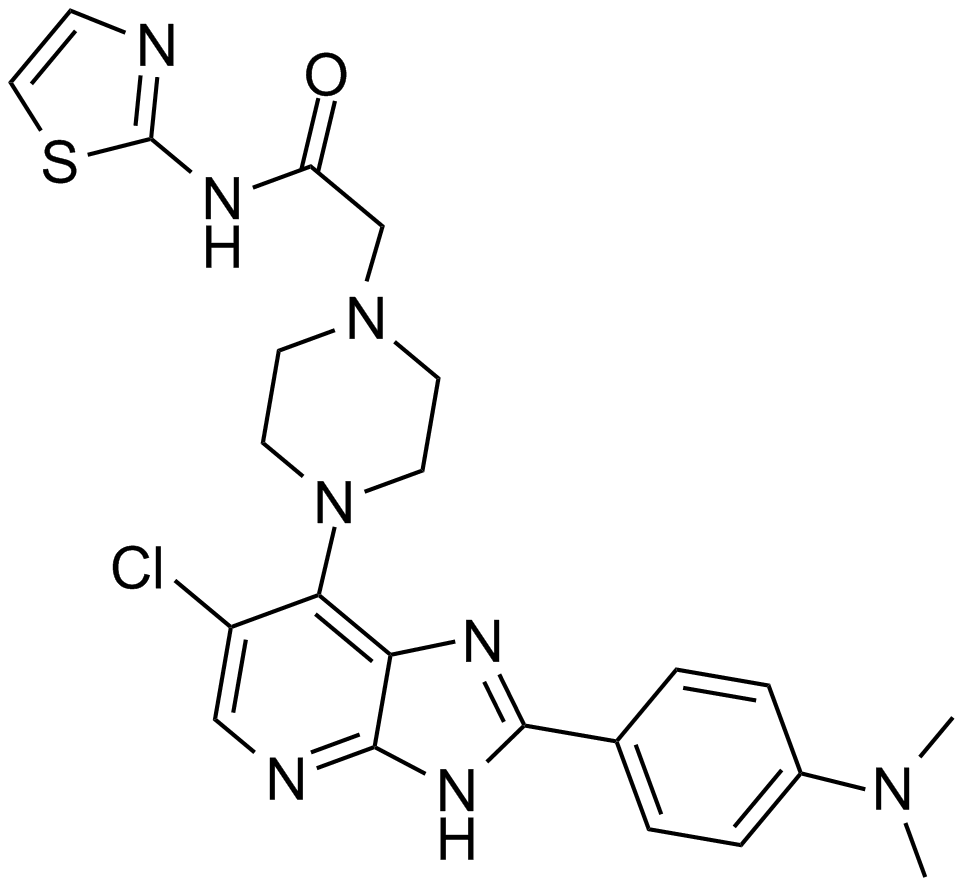CCT129202 |
| رقم الكتالوجGC11310 |
An Aurora kinase inhibitor
Products are for research use only. Not for human use. We do not sell to patients.

Cas No.: 942947-93-5
Sample solution is provided at 25 µL, 10mM.
CCT129202, a derivative of the piperazinyl imidazo[4,5-b] pyridine scaffold, is a novel and potent inhibitor of Aurora kinase that ATP-competitively inhibits Aurora A, Aurora B and Aurora C with values of 50% inhibition concentration IC50 of 0.042, 0.198 and 0.227 μmol/L respectively. CCT129202 exhibits anti-cancer activity against multiple human tumor cell lines through inhibiting proliferation, inducing apoptosis and delaying mitosis, abrogation of nocodazole-induced mitotic arrest and spindle defects. Recent study results have shown that CCT129202 inhibits the growth of HCT116 xenografts in nude mice and induces the production of a cyclin-dependent kinase inhibitor, p21, in HCT116 cells consequently leading to Rb hypophosphorylation.
Reference
[1].Chan F, Sun C, Perumal M, Nguyen QD, Bavetsias V, McDonald E, Martins V, Wilsher NE, Raynaud FI, Valenti M, Eccles S, Te Poele R, Workman P, Aboagye EO, Linardopoulos S. Mechanism of action of the Aurora kinase inhibitor CCT129202 and in vivo quantification of biological activity. Mol Cancer Ther. 2007; 6(12 Pt1): 3147-3157.
Average Rating: 5 (Based on Reviews and 30 reference(s) in Google Scholar.)
GLPBIO products are for RESEARCH USE ONLY. Please make sure your review or question is research based.
Required fields are marked with *




















